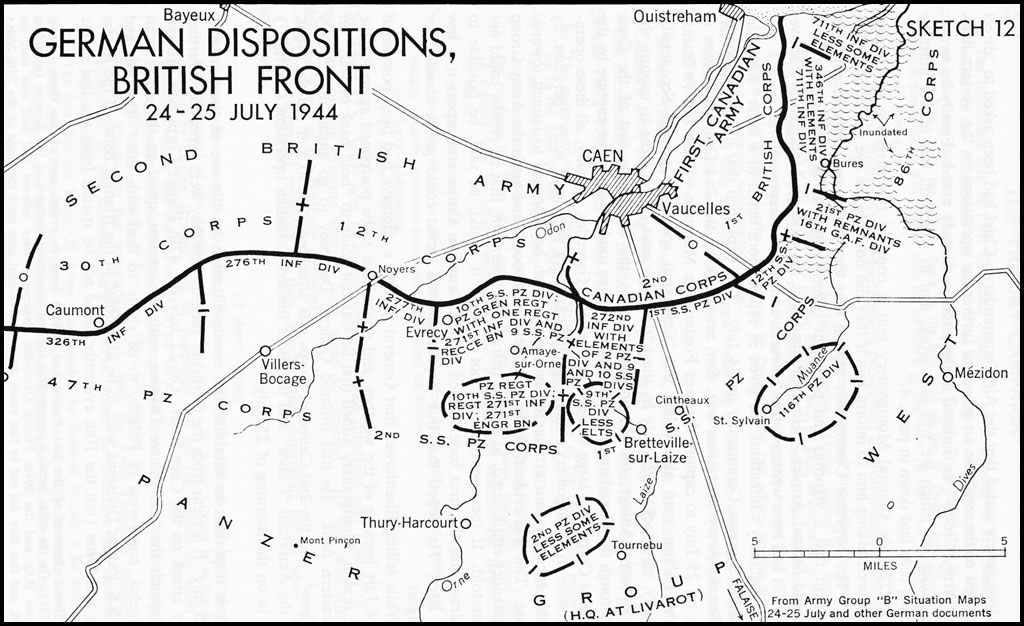pintere wrote:Shock troops? That can only seriously be said about only some of the Panzer and Fallschirmjager divisions that were sent to the western front. Most German infantry divisions that were sent to reinforce the western front were second rate at best and can hardly be considered shock troops.
If the Germans had not Eastern front to worry about they could have tripled the number of divisions available on the western front, this includes Panzer divisions. Not only would the Germans have had more Panzer divisions to counterattack and plug in holes in the line, they would also have enough quality infantry forces to not only hold the line, but also in-depth. Not to mention all the extra resources that would have made the logistics of the western front much easier. They would have had plenty of troops to turn the allied bridgehead into an Anzio equivalent, and with others to spare for any landing in Southern France.
Tripled? In the Eastern front by June 1944 they had lost 4.5 million soldiers while they had 2.5 million soldiers deployed versus 880,000 soldiers all over the Western front (a large fraction of which in divisions in process of "reconstruction" and not fit for combat). Without the Eastern front to worry about it would be possible to increase German air-power in the Western front by a factor of 10 or more* and ground forces by a factor of 4.
*Given the tiny resources committed by the Luftwaffe there and the fact the budget of the air force would greatly increase with the resources freed from the Eastern front.
Well, without Hitler opening the Eastern front to worry about it would be a whole another war entirely. The Western Allies would perhaps not even be able to gain the strategic initiative (notice that before opening the Eastern front the Allies were just reacting to Germany), while Germany would be free to focus the vast industrial resources of continental Europe into taking the little island of Britain. One thing would be certain though, the number of civilian and military deaths of the Western allies would be at least an order of magnitude higher than the historical levels.
It was a risk the allies could have easily afforded. Given their superiority in material and airpower any German counteroffensive late in the Normandy battles had little chance of succeeding. Why would the allies risk it? They would've had plenty to gain. Not only would they be able to shorten the war by six months, they could've also reduced their own casualties as well as set themselves up for a better post-war political position. The German sichelschnitt plan succeeded despite allied numerical strength and their having quality equipment. The allies could have easily replicated its success in the summer of '44.
I don't think they would have been able to shorten the war much because if the Western front collapsed faster the Germans would just allocated more reinforcements there, since only about 20% of Germany's field army was there in the first place, increasing the strength of that individual front would be easy. Maybe if the Western Allies had the operational genius of a Manstein they could have driven straight for Berlin after breaking out quickly and taking out the head of the Nazis by the end of 1944 but that's like asking "what if Alexander the Great was incompetent".
If you look at maps of the war you notice that all fronts were retreating at similar rates and while Allied numerical superiority was higher in the Eastern front the lower quality of those troops plus the lower quality of their air support, implies that the relative strength of German/Allied forces adjusted by quality was similar across the 3 fronts: Italy, Western and Eastern. If Allied performance in a relatively small front like the Western or Italian (20% and 10% of German strength, respectively) resulted into the fast collapse of that front they would reinforce it with forces from other fronts: Hitler was playing a game of minimizing the speed of territorial loss since the failure of Stalingrad.
Obviously, the main factor in that was the Soviet Union, the Western allies were mostly profiting from Soviet blood by taking territories in continental Europe after the outcome was decided but before the war was over. Without Operation Overlord the war would have ended in 1945 anyway, maybe a few months later, but nothing else besides the post war borders would be changed.
"In tactics, as in strategy, superiority in numbers is the most common element of victory." - Carl von Clausewitz
